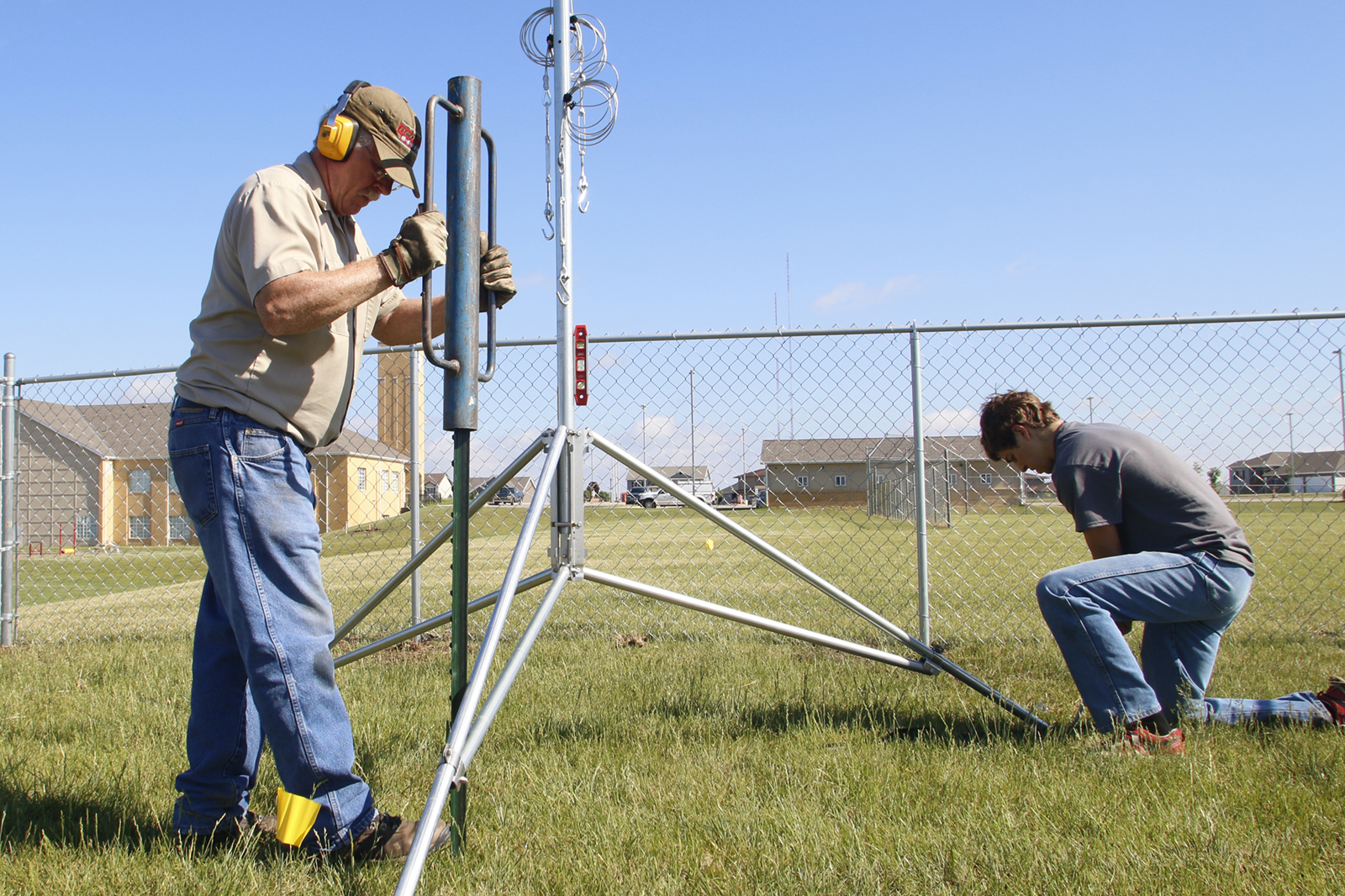
So far in 2018, seven weather stations have been added to the Nebraska Mesonet, the statewide network operated out of the Nebraska State Climate Office. The total is more than have been installed in a year since 2004, and an eighth is likely to be installed by the end of summer.
Traditional tripod stations were installed in Decatur, Plattsmouth, Mead, southeast Lincoln, Oshkosh and Broadwater, and a 10-meter tower was installed in Leigh. These additions bring the total station count to 68.
The stations were sponsored by the Nebraska Forest Service; the Papio-Missouri, Lower Elkhorn, North Platte natural resource districts; the City of Lincoln; the Agricultural Research Division and the Institute of Agriculture and Natural Resources at the University of Nebraska-Lincoln; and Nebraska Extension.
“Each entity has a specific need, such as water resource management, stormwater management, phenotype augmentation, fire weather danger, and crop water use,” said Martha Shulski, NSCO director. “Furthermore, these seven stations increase the density of the observations in our network that ultimately lead to improved monitoring and decision support.”
At least one station, located at the Eastern Nebraska Research and Extension Center near Mead, likely will be used to support research on plant responses to environmental stresses, including changes in climate.
Helping with installations is NSCO student intern, Regan Kerkman, who also is helping Glen Roebke, mesonet technician, and Stonie Cooper, mesonet manager, complete the annual maintenance run of all our stations. Maintenance season should wrap up by the end of September.
Included in the maintenance schedule is moving the stations toward higher frequency data collection. Instead of updates every five minutes, climate observations for air temperature, humidity, liquid precipitation, wind speed and direction, solar radiation, barometric pressure, soil temperature and soil moisture will be collected every minute.
“This will allow for better observations of high-intensity rain events and wind shifts associated with storms,” Shulski said.
Nebraska Mesonet is also conducting testing on a new precipitation gauge at Rogers Farm Research and Development site. The new gauge is billed as more responsive to heavy rainfall events. Sample data will be collected over the next year, and then will be compared to standard sets for reliability and accuracy. NSCO will keep you posted on results.
On Twitter
Nebraska Mesonet is now on Twitter. Follow updates here.
Writer: Shawna Richter-Ryerson